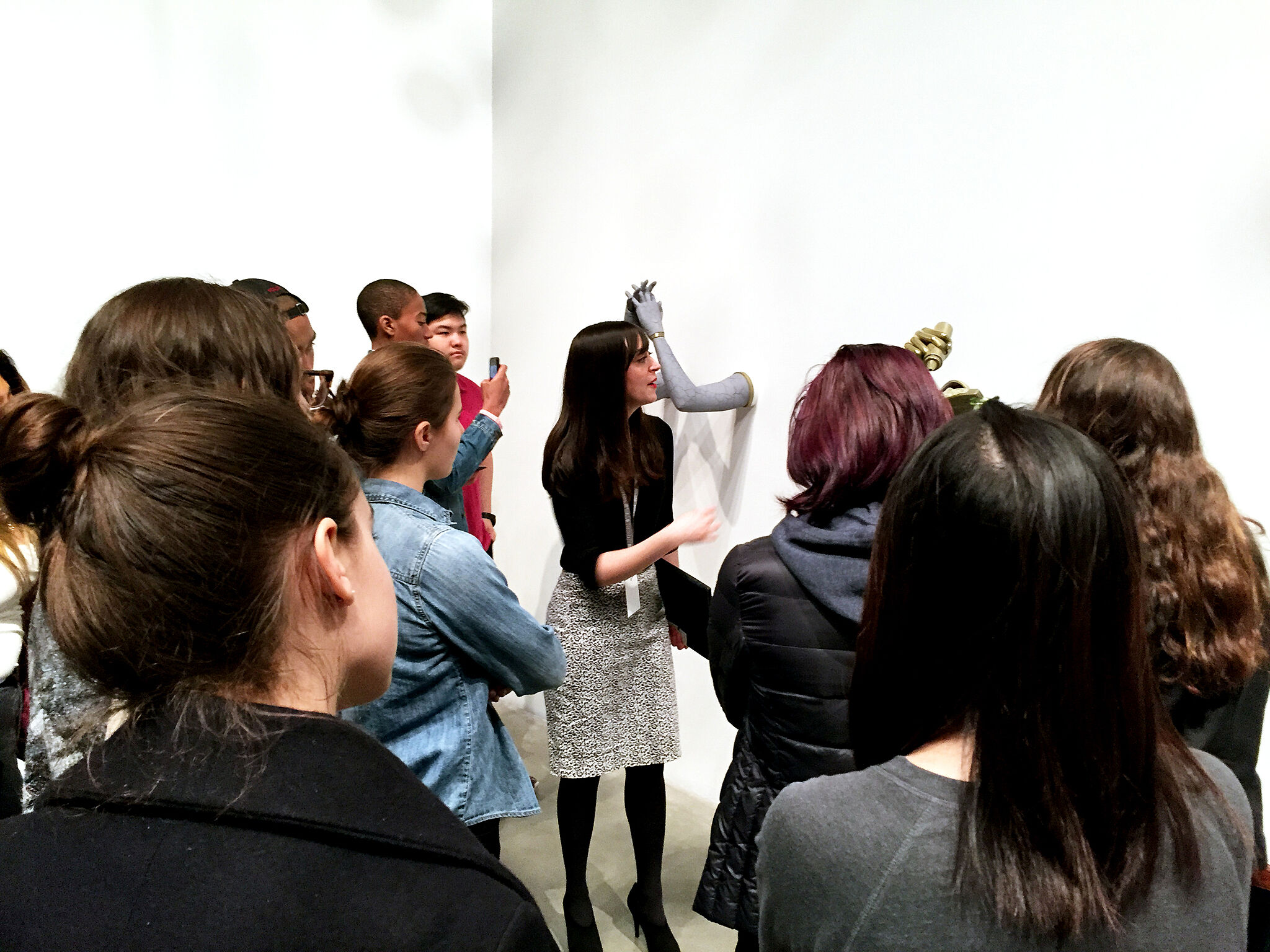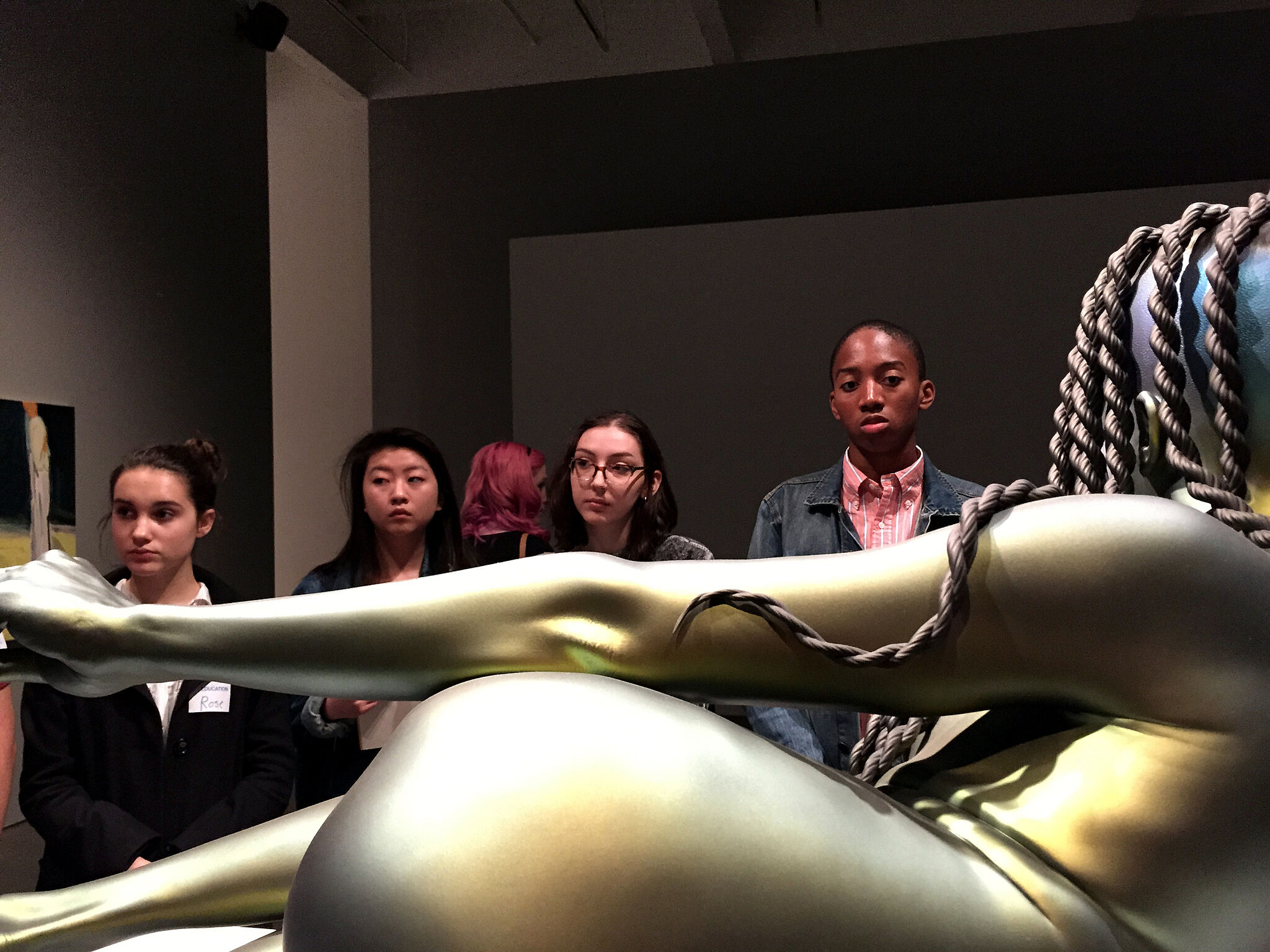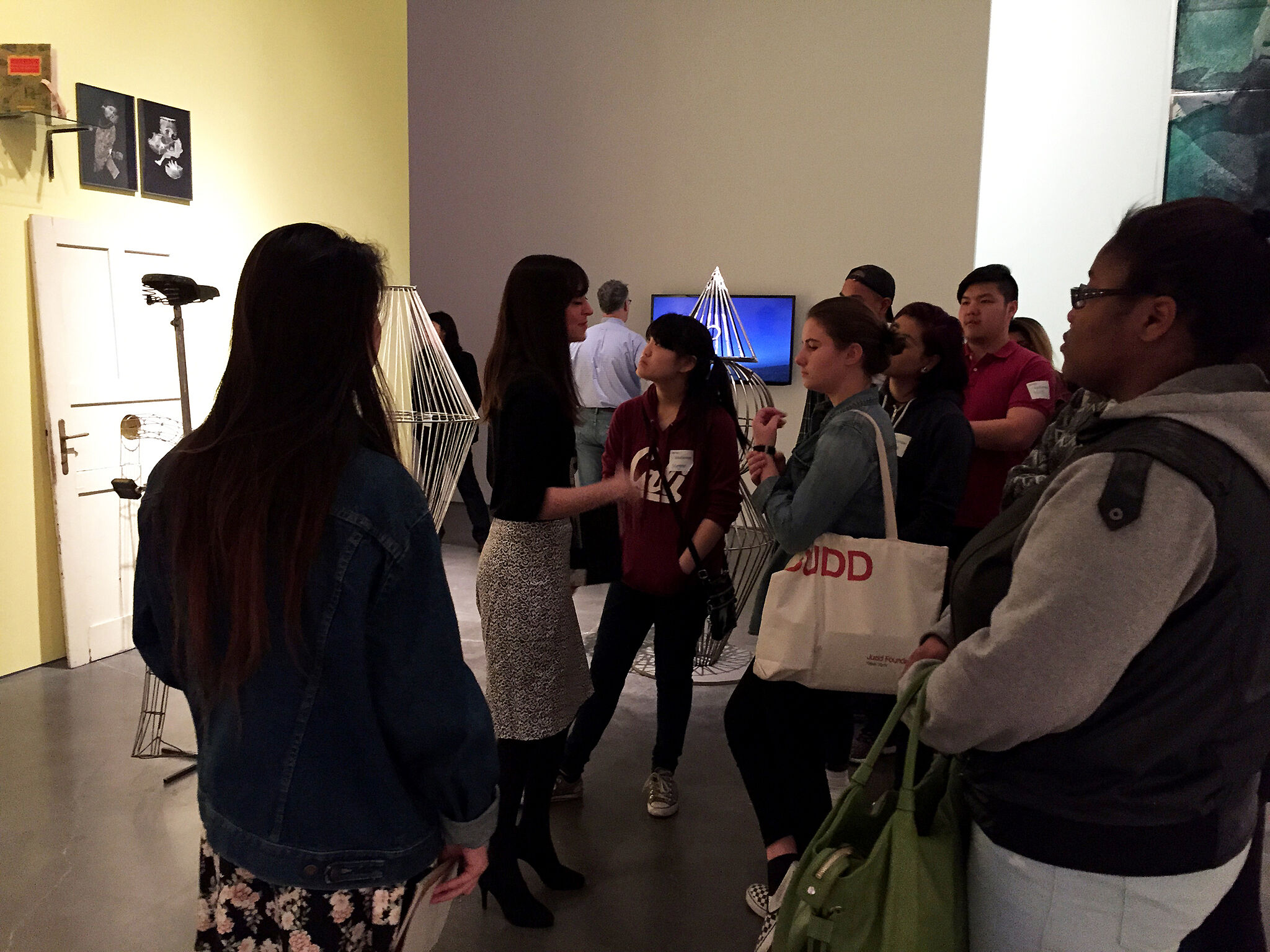Second Saturdays: New Museum
Apr 11, 2015
On Saturday, April 11, YI Leaders and other New York City teens visited the New Museum’s Triennial (February 25-May 24, 2015), this year entitled Surround Audience. Comprised of works by more than fifty artists from twenty-five countries, the exhibition explored an array of subjects and ideas (ranging from Brazilian phantoms to political cynicism) and the question of what it means to be visible in an age saturated by media.
Frank Benson’s Juliana (2015) is a life-size sculpture of a transgender woman lounging on a pedestal with the same regality as Edouard Manet’s Olympia (1863), her skin exudes an otherworldly sheen as if lit from within. Something about this piece felt immaterial—almost unreal. Our guesses about what it is made of ranged from hammered metal to frosted glass. When we found out that Juliana is 3D printed, somebody beside me audibly gasped. Knowing that this figure was built layer by layer with a printer made the sculpture even more unnerving. As we climbed the eerie, green-lit museum staircase, we were suspended in a kind of uneasy anticipation. Our ascent was accompanied by a low drone, like an orchestra tuning, or a low-flying plane passing. As we descended the staircase later on, it sounded more like sirens.
Eva Kotátková’s work Not How People Move But What Moves Them (2013) consists of a horrifying assortment of oddly fascinating torture devices, made more disconcerting by the cheerful yellow wall on which many are mounted. The work is activated by performers who were absent when we saw it. Deciphering how the devices may have functioned when activated prompted a sobering conversation about the body and its constraints.
Our uneasiness reached its height at Josh Kline’s installation Freedom (2015). Teletubby-like figures dressed and equipped like SWAT team members stand upon a replica of the grounds of Zuccotti Park (the site of New York City’s Occupy Wall Street movement), and their bellies have screens which play loops of retired officers reciting social media posts about police violence. In a video at the back of the installation, an Obama impersonator—superimposed with an actual photograph of President Obama—gives an imagined inauguration address written by the artist and a speech writer. This was an unforgettable exhibition which presented ideas that are bound to linger.
By Lisa, YI Leader



